Most small business owners understand that an attractive, user-friendly website is key to attracting and engaging potential customers.
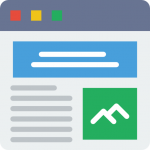
Certain functionalities like responsive design and fast load times are crucial. However, there are some critical website features that often get overlooked.
Whether you’re building a new website, considering a redesign, or just reassessing your current website, here are nine essential features that lie at the heart of every successful business website.
A Clear Unique Value Proposition (UVP) on the Homepage
Benefits: Differentiates you from the competition, builds curiosity, and decreases homepage bounce rates.
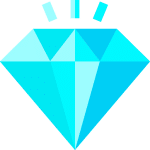
You only have a few seconds to convince visitors to stay on your website, so it’s crucial to immediately communicate your value to potential customers. A clear UVP on the homepage is one of the best ways to do this.
Put simply, a UVP is a short statement that summarizes what you offer, who you cater for, how customers benefit, and why you’re better than the competition.
Place your UVP near the top of the homepage in a large font.
A Customer-Oriented Navigation Bar
Benefits: Helps potential customers access relevant information, reduces bounce rates, and provides a clear path to purchase.
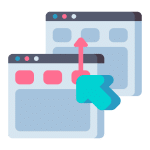
Every visitor that lands on your website is looking for information. The trouble is, you don’t know exactly what they’re looking for.
Some visitors want to learn more about your business, some are looking for reassurance before they take further action, and others are ready to do business with you.
Typically, your navigation bar should include no more than seven items that cater for each type of visitor. For example: Home Page, About, Contact, Blog, Services/Products, Testimonials, and FAQs. For most businesses, this is sufficient.
If you offer more options, it can confuse visitors and deter them from taking further action.
A Call-to-Action (CTA) on Every Page
Benefits: Helps visitors navigate your website and drives conversions.
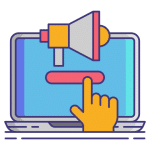
Clear CTAs complement your main navigation.
They not only encourage visitors to explore more of your site, they also motivate users to complete certain actions.
On the homepage, you might offer a free guide to expand your email list. On a product page, you might insert a link to a case study to boost your credibility. It depends on your unique business and marketing goals.
Think about what you want visitors to do on each web page and insert a clear CTA to encourage them to act.
Contact Information on Every Page
Benefits: Builds audience trust, improves the user experience, and encourages potential customers to contact you.

Clearly displaying your phone number, address, and email at the top of every web page is a simple but effective way to make your business look more credible.
Put simply, it makes people feel more comfortable doing business with you.
It’s also a good idea to:
- Put your contact details in the footer of every page
- Show your hours of operation
- Include an additional CTA button on every page, such as “Get in Touch”
An Audience-Focused About Page
Benefits: Answers common customer questions and builds customer confidence.

The About page is one of the most visited pagesIn WordPress, a page is a content type that is used to create non-dynamic pages on a website. Pages are typica... More on any website, so it’s important to maximize the impact this section has on your audience.
However, it’s a mistake to make the About page all about you. The most effective About pages show potential customers what’s in it for them.
Cover briefly who you are, but then talk about how you solve the problems of your target audience and how they can benefit from doing business with you.
A Blog
Benefits: Increases awareness of your business online, boosts search engine rankings, improves your credibility, and builds customer loyalty.

One of the main reasons for publishing regular blog content is that it helps potential customers find you online.
By using industry-related keywords and answering common customer questions, your content is more likely to appear in search results pages when prospects are researching online.
Blog postsA post is a type of content in WordPress, a popular open-source content management system used for creating an... More are also easy to share on social media. This not only drives more website traffic, it also establishes your company as an expert in your industry and can result in greater customer loyalty.
See also: How To Start A Successful Blog: The Definitive Guide — This massive, step-by-step tutorial covers everything you need to know to build a blog that drives results for your business. 🚀
A Testimonial Section
Benefits: Builds trust in your company, highlights the benefits of your products or services, and increases conversions.
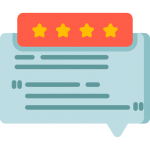
From the moment visitors arrive on your website, they’re judging your business: Is this company legitimate? Are its products any good? Does this business care about its customers?
All of these questions and more can be addressed in testimonials. Testimonials show that you have other satisfied customers and go a long way toward reassuring potential customers.
Apart from having one page dedicated to customer testimonials—accessible from the main navigation bar—consider adding testimonials to your sidebar, homepage, and product pages.
A Clearly Organized FAQ Page
Benefits: Alleviates customers’ concerns, improves search engine visibility, and reduces common customer service enquiries.

Use email enquiries, customer calls, and social media questions to gather together a list of the most common customer questions. Then divide these into three sections: company, products, and services. Give clear, concise answers that include relevant keywords and phrases to boost your site content’s visibility in search engine results pages.
By splitting your questions and answers into clearly-defined topics, readers will find it easier to scan the page for the information they’re looking for. To increase engagement, include links to other sources of information on your site, a link to your Contact page, and a contact form.
A Simple Lead Capture Form
Benefits: Generates more qualified leads and builds customer relationships.

A lead capture form—placed on your homepage and Contact page—is a great way to build an email list of potential customers.
It enables you to reach out to prospects whenever you have new content, news, or offers to share.
To encourage people to sign up to your email list, offer a free guide or a discount on their first order, and only ask for the minimum amount of personal information.
Final Thoughts
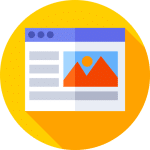
A website can be one of your most valuable marketing tools, but only if it’s put together correctly. Without certain features, a website loses its marketing power, which ultimately restricts business growth.
Ultimately, the nine features outlined here will make your website more attractive, engaging, and user-friendly for visitors. While every business has different goals and there’s no one-size-fits-all solution, including these elements on your website will ensure you’re on the right track.
Ready to start building your website? Check out our step-by-step tutorial here. 👈


